
Discover the Ancient Marvels of Proleek Dolmen
Explore Proleek Dolmen, an ancient portal tomb in County Louth, Ireland, and experience the rich history and breathtaking landscapes of this iconic landmark.
Proleek Dolmen, a remarkable historical landmark located near Dundalk, Co. Louth, invites tourists to explore its ancient heritage and breathtaking surroundings. This awe-inspiring megalithic structure, dating back to the Neolithic period, stands as a testament to Ireland’s rich history and serves as a captivating destination for visitors seeking to connect with the past. Surrounded by lush greenery and a serene landscape, Proleek Dolmen provides an ideal spot for photography, contemplation, and a deeper appreciation of Ireland’s archaeological treasures.
A brief summary to Proleek Dolmen
- Dundalk, Proleek, Co. Louth, IE
Local tips
- Visit early in the morning or late afternoon for the best lighting for photography.
- Wear comfortable shoes as the terrain can be uneven.
- Check the weather forecast, as the area can be quite windy.
- Bring a picnic to enjoy in the scenic surroundings.
Getting There
-
Car
If you are traveling by car, start by heading to Dundalk. From the center of Dundalk, take the R173 road towards the southeast. Continue on this road for about 5 kilometers. Look for the signs indicating Proleek Dolmen, which will direct you towards Proleek. The dolmen is located in a field, so you may need to park your car in a safe area nearby and walk to the site. Be prepared for a short walk of approximately 10-15 minutes from your parking spot.
-
Public Transportation
To reach Proleek Dolmen using public transportation, take a bus from Dundalk Bus Station to the nearest stop to Proleek. Check the local bus schedules for the most current routes, as they may change. Once you arrive at the bus stop, it is advisable to ask the driver or locals for directions to Proleek Dolmen, as it may require a short walk. Expect to walk approximately 20-30 minutes from the bus stop to the dolmen itself.
-
Walking
If you are already in the vicinity of Proleek, you can walk to the dolmen. From nearby landmarks or accommodations, head towards the R173 road and follow the signs to Proleek. The dolmen is located in an open field, so ensure you are wearing comfortable walking shoes. The walk may take around 15-30 minutes depending on your starting point.
Discover more about Proleek Dolmen
Iconic landmarks you can’t miss
Proleek Wedge Tomb
0.1 km
Explore the ancient Proleek Wedge Tomb in Co. Louth, Ireland - a stunning historical landmark steeped in Neolithic history and surrounded by breathtaking scenery.

Kelly's Monument
4.9 km
Discover the rich history and captivating charm of Kelly's Monument in Dundalk, a must-see landmark for every traveler exploring County Louth.

Maid of Erin
5.0 km
Explore the Maid of Erin, a historical landmark in Dundalk, County Louth, and immerse yourself in Ireland's rich cultural heritage.

Bronze Age Monolith
5.9 km
Visit the Bronze Age Monolith in Dundalk, a historic landmark that reveals the ancient stories of Ireland's past amidst stunning natural beauty.
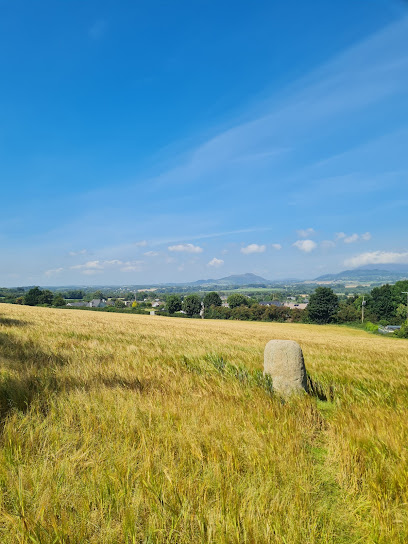
Heritage Site : Dundalk Workhouse Graveyard
7.6 km
Explore the Dundalk Workhouse Graveyard, a haunting reminder of Ireland's Great Famine and its impact on local communities.
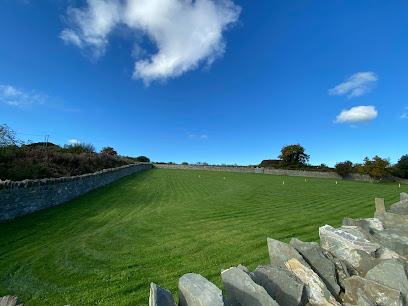
Dunmahon Castle
10.1 km
Explore the rich history and enchanting beauty of Dunmahon Castle in County Louth, Ireland, a must-visit for lovers of medieval architecture.

Ballykeel Dolmen (State Care Monument)
13.5 km
Explore the ancient Ballykeel Dolmen, a stunning Neolithic monument nestled in the picturesque landscape of Mullaghbawn, Ireland.
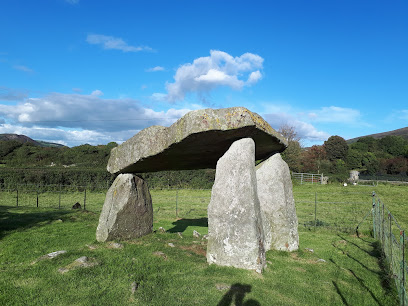
East Coast Adventure at Rostrevor Mountain Lodge, Mourne Mountains, Self Catering ensuite accommodation
14.7 km
Experience the thrill of adventure and the beauty of nature at East Coast Adventure, your gateway to the Mourne Mountains.

Roodstown Castle
20.5 km
Explore Roodstown Castle, a historical gem in County Louth, where Ireland's rich history meets breathtaking natural beauty.

Spelga Reservoir
24.1 km
Experience the serene beauty and outdoor adventures at Spelga Reservoir, a hidden gem nestled in the Mourne Mountains of Northern Ireland.

Slieve Binnian
26.7 km
Explore Slieve Binnian, a breathtaking mountain peak in the Mourne Mountains, offering stunning views and unforgettable hiking adventures.

Ben Crom
27.4 km
Discover the breathtaking beauty of Ben Crom in Newry, a mountain peak offering stunning views and unforgettable outdoor adventures.
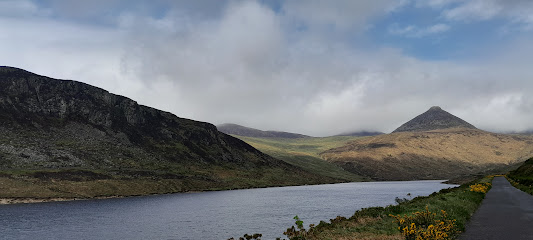
Slieve Meelbeg
27.5 km
Explore Slieve Meelbeg, a stunning mountain peak in the Mourne Mountains, offering breathtaking views, hiking trails, and a rich natural heritage.

Historical Archeological Site
27.5 km
Explore Drumshallon, a captivating historical archeological site in Co. Louth, where Ireland's rich past comes to life amidst serene landscapes.

Slieve Bearnagh
28.6 km
Discover the breathtaking beauty of Slieve Bearnagh, a stunning mountain peak in Northern Ireland perfect for hiking and nature lovers.

Unmissable attractions to see
Grave of King Edward Bruce - Last High King of Ireland
2.8 km
Explore the serene resting place of King Edward Bruce, the last High King of Ireland, and delve into the rich history of this historic site in Co. Louth.

Fish Column
3.9 km
Explore the Fish Column at Táin Bridge in Dundalk, a stunning tribute to the rich maritime history of Co. Louth, Ireland.
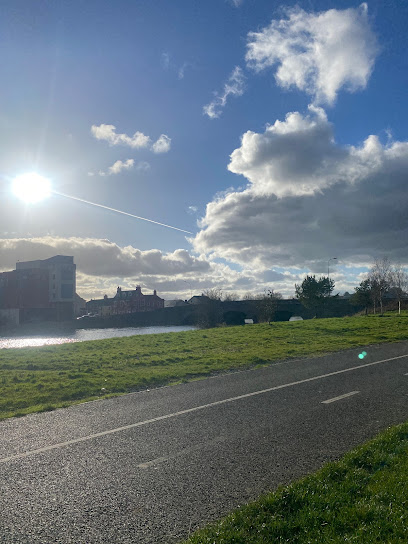
Heart Space Statue
4.7 km
Explore the Heart Space Statue in Dundalk, Co. Louth - a stunning symbol of creativity and community artistry in a beautiful park setting.

County Museum Dundalk
4.8 km
Explore the cultural heart of County Louth at County Museum Dundalk, where history and heritage come to life through engaging exhibits.
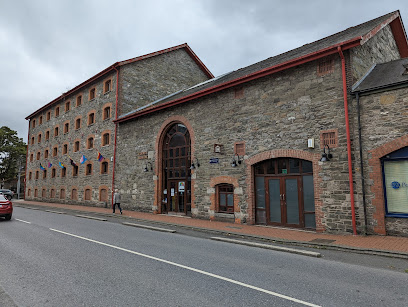
Ice House Hill Park
5.3 km
Experience the serene beauty and rich history of Ice House Hill Park, a tranquil memorial park in Dundalk, Co. Louth, perfect for relaxation and exploration.

Long Womans Grave
5.5 km
Discover the captivating Long Woman's Grave in Co. Louth, where ancient legends meet stunning landscapes in a historic Irish landmark.

Ladywell Shrine
6.0 km
Explore Ladywell Shrine, a tranquil historical landmark in Dundalk, rich in history and surrounded by stunning natural beauty.

The Foxes Rock
6.4 km
Explore The Foxes Rock in Co. Louth – a breathtaking hiking area with stunning views and serene nature trails perfect for every adventurer.

BlackRock promenade , with outstanding views of mountains and coastal views
7.7 km
Explore the scenic BlackRock Promenade, a picturesque coastal walk with stunning views of mountains and the shimmering sea in Co. Louth, Ireland.

Blackrock Beach
8.6 km
Experience the beauty and tranquility of Blackrock Beach in County Louth, a perfect destination for relaxation, recreation, and exploration along the Irish coast.

Slieve Gullion Forest Park
8.9 km
Explore the beauty of nature at Slieve Gullion Forest Park, a stunning outdoor escape in Northern Ireland perfect for adventure and relaxation.

Castle Roche
9.2 km
Discover the medieval charm and stunning views at Castle Roche, a historic gem in County Louth, Ireland, perfect for history lovers and adventurers alike.
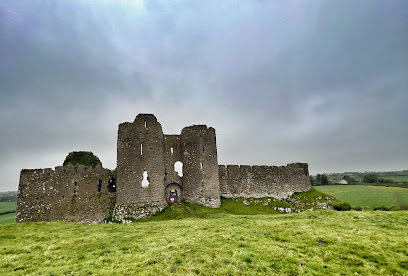
Narrow Water Keep
9.4 km
Explore the storied past and breathtaking beauty of Narrow Water Keep, a historical landmark overlooking Carlingford Lough in Northern Ireland.

Warrenpoint
9.4 km
Discover the beauty of Warrenpoint, a scenic coastal town in Northern Ireland offering stunning views, rich culture, and a serene escape.

Carlingford Lough Greenway
10.0 km
Discover the breathtaking beauty of Carlingford Lough Greenway, a serene trail nestled between mountains and lough, perfect for outdoor enthusiasts and families.

Essential places to dine
Proleek Restaurant
0.7 km
Experience the finest local cuisine at Proleek Restaurant in Co. Louth – where gourmet meets tradition amidst breathtaking landscapes.

The Lisdoo Bar & Restaurant
4.3 km
Experience the perfect blend of tradition and modernity at The Lisdoo Bar & Restaurant in Dundalk – where culinary excellence meets warm Irish hospitality.

Fitzpatrick's Bar & Restaurant
4.8 km
Experience mouthwatering grill dishes and warm hospitality at Fitzpatrick's Bar & Restaurant in Jenkinstown.

Nonna Nenne'
4.9 km
Experience authentic Italian cuisine at Nonna Nenne', where every dish is crafted with love and tradition in Dundalk.

The Spotted Dog
5.1 km
Discover authentic Irish flavors at The Spotted Dog in Dundalk - where local ingredients meet culinary excellence.

Diamonds Restaurant
9.4 km
Discover family-friendly dining at Diamonds Restaurant in Warrenpoint, offering delectable breakfast and modern European cuisine in a cozy atmosphere.

Raymie's Seafood Bar & Grill
9.4 km
Savor fresh seafood and succulent steaks at Raymie's Seafood Bar & Grill in Warrenpoint – where every meal is a coastal delight!

The View Restaurant
9.6 km
Discover culinary excellence at The View Restaurant in Warrenpoint - where authentic Irish dishes meet breathtaking landscapes.

Killowen Bar
12.1 km
Discover the heart of Rostrevor at Killowen Bar - where traditional Irish hospitality meets delightful cuisine in a cozy atmosphere.
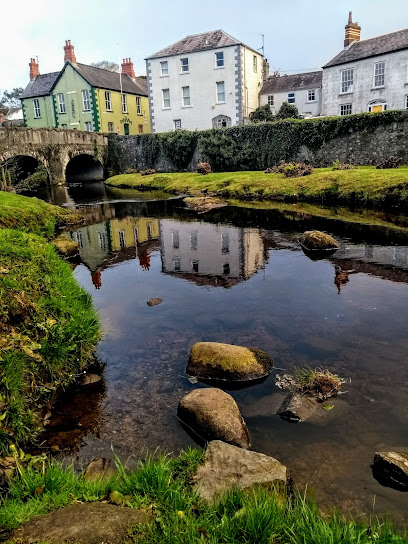
The Rostrevor Inn
12.1 km
Discover authentic Irish hospitality at The Rostrevor Inn - where traditional pub culture meets cozy bed & breakfast comfort in stunning surroundings.

Kilbroney Bar
12.2 km
Discover Kilbroney Bar: A cozy bar & grill in Rostrevor offering delicious food and drinks amid stunning Northern Ireland scenery.

The Old School House Cafe
12.3 km
Discover delectable dishes at The Old School House Cafe in Rostrevor - where local flavors meet cozy ambiance.

The Oak Tree Restaurant Mayobridge Golf Club
18.7 km
Discover exceptional steak dining with stunning views at The Oak Tree Restaurant in Mayobridge Golf Club.

Minny Doyles
21.9 km
Experience exceptional continental cuisine and vibrant nightlife at Minny Doyles in Hilltown - where every meal is a celebration.

The Downshire Arms
22.0 km
Experience authentic Irish cuisine at The Downshire Arms in Hilltown – where tradition meets taste in a cozy setting.

Markets, malls and hidden boutiques
Ozone Boutique
4.8 km
Discover local fashion at Ozone Boutique, Dundalk's premier clothing store offering unique styles and personalized service.

Gift and Art Gallery
4.9 km
Discover locally crafted treasures at the Gift and Art Gallery in Dundalk, where art meets culture in a vibrant shopping experience.

Bumbles for Kids
4.9 km
Discover stylish and comfortable children's clothing at Bumbles for Kids in Dundalk, where quality meets fashion for your little ones!

Elmay Boutique
4.9 km
Explore Elmay Boutique in Dundalk for unique fashion finds and personalized service in a cozy shopping environment.

Carroll Village Shopping Centre
4.9 km
Discover the charm of Carroll Village Shopping Centre in Dundalk, where shopping meets dining in a vibrant atmosphere perfect for tourists.

McEvoys Department Store
4.9 km
Discover the ultimate shopping experience at McEvoys Department Store in Dundalk, offering everything from clothing to home essentials in one convenient location.

Sheba Boutique
5.0 km
Explore Sheba Boutique in Dundalk for unique fashion and home decor items that capture the essence of Irish style and creativity.

LongWalk Shopping Centre
5.0 km
Explore LongWalk Shopping Centre in Dundalk for a unique shopping experience with diverse stores, delightful dining, and vibrant community events.

SARA Boutique
5.0 km
Explore SARA Boutique in Dundalk for fashionable women's clothing and unique styles in a welcoming shopping environment.

Regatta Great Outdoors Dundalk
5.1 km
Shop at Regatta Great Outdoors Dundalk for stylish and functional outdoor clothing, perfect for exploring Ireland's breathtaking landscapes.

Michael Smyth's
5.1 km
Explore the unique charm of Michael Smyth's gift shop in Dundalk, offering a myriad of handcrafted treasures and local artisan finds.
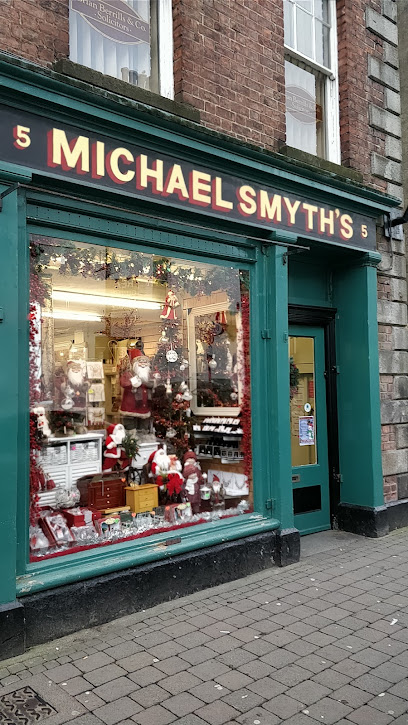
Marshes Shopping Centre
5.2 km
Discover a shopping paradise at the Marshes Shopping Centre, featuring diverse shops, delicious dining options, and a vibrant atmosphere in Dundalk.

Ruby Nu Boutique
5.3 km
Discover the latest women's fashion trends at Ruby Nu Boutique in Dundalk, where style meets affordability in a chic shopping experience.

Home Store + More
5.5 km
Explore Home Store + More in Dundalk for a diverse selection of affordable home goods, perfect for enhancing your living space or finding the ideal gift.

Dundalk Retail Park
5.6 km
Discover the ultimate shopping experience at Dundalk Retail Park, featuring a wide variety of stores and delightful dining options in Co. Louth.

Essential bars & hidden hideouts
Lumpers Bar
1.8 km
Discover the charm of Lumpers Bar in Ravensdale, a cozy pub offering a delightful selection of drinks and traditional Irish cuisine.

BODHRAN Bar
4.7 km
Discover the essence of Irish culture at BODHRAN Bar in Dundalk, where lively atmosphere meets exceptional local brews.

Micheal McCourt
5.1 km
Discover the vibrant atmosphere and extensive drink selection at Micheal McCourt Pub in Dundalk, where Irish hospitality meets local charm.

The Bartender
5.2 km
Experience the charm of The Bartender in Dundalk, where Irish hospitality meets lively atmosphere and an impressive drink selection.

The Rum House
5.2 km
Experience the vibrant nightlife at The Rum House, Dundalk's premier cocktail bar serving exquisite drinks in a stylish atmosphere.

Windsor Bar and Restaurant
5.6 km
Experience the best of Dundalk at Windsor Bar and Restaurant, where local flavors and a welcoming atmosphere come together.

The Malt House
6.2 km
Experience authentic Irish hospitality at The Malt House, a beloved pub and restaurant in the heart of Dundalk offering hearty meals and a vibrant atmosphere.
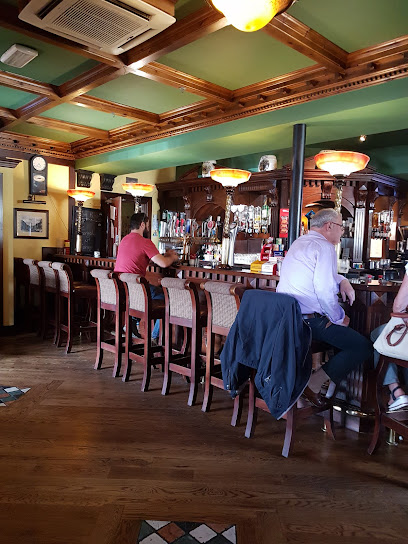
Bayview Inn
8.6 km
Experience the warmth and charm of Bayview Inn, a cozy bar in Blackrock, Co. Louth, where local hospitality meets scenic beauty.

The Stone House
8.6 km
Discover the warm hospitality and vibrant atmosphere of The Stone House in Haggardstown, the perfect spot for relaxation and local culture.

The First & Last
9.3 km
Discover the charm of The First & Last, a welcoming pub in Warrenpoint offering a delightful menu and a vibrant atmosphere for all visitors.

Ye Old Ship Inn
9.3 km
Discover the heart of Warrenpoint at Ye Old Ship Inn, a charming pub serving local flavors and warm hospitality in a delightful setting.

No7 Duke Street (The Duke)
9.4 km
Discover the lively No7 Duke Street in Warrenpoint, where delicious cuisine, vibrant music, and a welcoming atmosphere await your visit.

PJ O Hare's Carlingford
10.6 km
Discover the heart of Irish culture at PJ O'Hare's Carlingford, where delicious food and live music create unforgettable memories.

Mac Namees Bar
11.7 km
Discover the heart of Irish culture at Mac Namees Bar in Knockbridge, where warmth, tradition, and great food await every visitor.

Cloughmore Inn
12.1 km
Experience the warmth of Irish hospitality at Cloughmore Inn, a charming pub in Rostrevor offering great food, drinks, and local culture.




